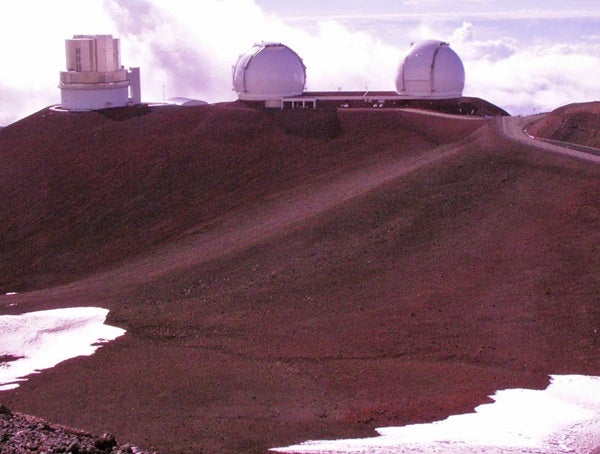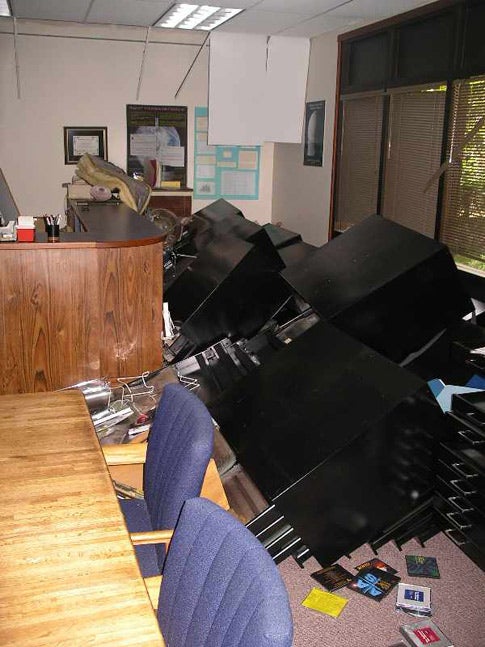The largest earthquake there in 20 years, plus at least a dozen aftershocks, shook Hawaii Island’s west coast Sunday morning. Strong shaking from the magnitude 6.7 temblor — and the 5.8-magnitude aftershock that followed it minutes later — triggered landslides, caused power and communication outages, and damaged structures across the Big Island. No fatalities, however, have been reported.
The observatories atop Mauna Kea didn’t escape entirely unscathed. The W. M. Keck Observatory, whose twin 10-meter telescopes are the world’s largest, canceled all observing through Wednesday night. Some guiding and pointing systems were affected and must be repaired before observing resumes. Technicians reported yesterday that the primary mirrors of both Keck telescopes appear undamaged.
“We have a great team for circumstances like this, and everything that we are doing is about getting the telescopes working on-sky as soon as we can in a safe manner,” Keck Observatory Director Taft Armandroff said Monday. “There has been an amazing amount of dedication and resourcefulness by staff at the summit last night and today.”
As of Monday afternoon, technicians had not yet made a direct inspection of the telescope’s primary mirror, but they report it appears to be in one piece. Gemini North officials say it’s impossible to say when normal operations will resume.
The Canada-France-Hawaii Telescope (CFHT), also sited on Mauna Kea, hosts a 3.6m optical and infrared telescope. On Monday, the observatory’s web site reported that “the dome has moved on its track and cannot be rotated at the moment. … It is likely that we might be out of commission for some time. … The entire CFHT staff is working very hard to bring us back on the sky as soon as possible.”
The United Kingdom Infra-red Telescope (UKIRT) had ended an observing run an hour before the big quake hit at 7:07 a.m. Hawaii Standard Time on Sunday. The 3.8m UKIRT, the world’s largest telescope dedicated solely to infrared astronomy, is owned by the United Kingdom Particle Physics and Astronomy Research Council (PPARC). As of Monday, tests indicated the UKIRT and PPARC’s 15m James Clerk Maxwell Telescope suffered no mechanical damage.











